Understanding Nutrition 14th Edition Whitney Rolfes Test Bank
$38.00
Understanding Nutrition 14th Edition Whitney Rolfes Test Bank Download
- Description
- Reviews (0)
Description
You will receive this product immediate after placing the order
All resources are in electronic format and can be downloaded from your account or email – How to Download. Payments will be processed instantly after checkout. Please note that all sales are final and non refundable. If you still have questions, find answers on our FAQ page or just send us an email at inquiry@testbanksafe.com, we will respond as soon as possible.
Chapter 1 – An Overview of Nutrition
MULTIPLE CHOICE
1. Which characteristic is most typical of a chronic disease?
a. It has a rapid onset.
b. It rarely has noticeable symptoms.
c. It produces sharp pains
d. It progresses gradually.
e. It disrupts daily life, but is unlikely to be life-threatening.
ANS: D DIF: Bloom’s: Understand REF: Introduction
OBJ: UNUT.WHRO.16.1.1 Describe how various factors influence personal food choices.
2. What is the chief reason most people choose the foods they eat?
a. cost
b. taste
c. convenience
d. nutritional value
e. habit
ANS: B DIF: Bloom’s: Remember REF: 1.1 Food Choices
OBJ: UNUT.WHRO.16.1.1 Describe how various factors influence personal food choices.
3. A child develops a strong dislike of noodle soup after she consumes a bowl while sick with the flu. Her reaction is an example of a food-related ____.
a. habit
b. social interaction
c. emotional turmoil
d. negative association
e. comfort eating
ANS: D DIF: Bloom’s: Evaluate REF: 1.1 Food Choices
OBJ: UNUT.WHRO.16.1.1 Describe how various factors influence personal food choices.
4. A person who eats a bowl of oatmeal for breakfast every day is most likely making a food choice based on ____.
a. habit
b. availability
c. body image
d. environmental concerns
e. cultural values
ANS: A DIF: Bloom’s: Evaluate REF: 1.1 Food Choices
OBJ: UNUT.WHRO.16.1.1 Describe how various factors influence personal food choices.
5. Which individual is making a food choice based on negative association?
a. A tourist from China who rejects a hamburger due to unfamiliarity
b. A child who spits out his mashed potatoes because they taste too salty
c. A teenager who grudgingly accepts an offer for an ice cream cone to avoid offending a close friend
d. An elderly gentleman who refuses a peanut butter and jelly sandwich because he considers it a child’s food
e. An adult who refuses to eat foods that are not locally-sourced and organic
ANS: D DIF: Bloom’s: Evaluate REF: 1.1 Food Choices
OBJ: UNUT.WHRO.16.1.1 Describe how various factors influence personal food choices.
6. The motive for a person who alters his diet due to religious convictions is most likely related to his ____.
a. values
b. body image
c. ethnic heritage
d. functional association
e. comfort
ANS: A DIF: Bloom’s: Understand REF: 1.1 Food Choices
OBJ: UNUT.WHRO.16.1.1 Describe how various factors influence personal food choices.
7. Farah is viewing an exciting sports match of her favorite team and eating because of nervousness. Her food choice will most likely be based on ____.
a. regional cuisines
b. preferences
c. emotional comfort
d. positive association
e. functional value
ANS: C DIF: Bloom’s: Evaluate REF: 1.1 Food Choices
OBJ: UNUT.WHRO.16.1.1 Describe how various factors influence personal food choices.
8. What term describes foods that contain nonnutrient substances whose known action in the body is to promote well-being to a greater extent than that contributed by the food’s nutrients?
a. fortified foods
b. enriched foods
c. functional foods
d. health-enhancing foods
e. bioavailable foods
ANS: C DIF: Bloom’s: Understand REF: 1.1 Food Choices
OBJ: UNUT.WHRO.16.1.1 Describe how various factors influence personal food choices.
9. Nonnutrient substances found in plant foods that may demonstrate biological activity in the body are commonly known as
a. bioenhancements
b. inorganic fibers
c. phytochemicals
d. phytoactive chemicals
e. nonnutritive additives
ANS: C DIF: Bloom’s Remember REF: 1.1 Food Choices
OBJ: UNUT.WHRO.16.1.1 Describe how various factors influence personal food choices.
10. By chemical analysis, what nutrient is present in the highest amounts in most foods?
a. fats
b. water
c. proteins
d. carbohydrates
e. vitamins and minerals
ANS: B DIF: Bloom’s: Remember REF: 1.2 The Nutrients
OBJ: UNUT.WHRO.16.1.2 Name the six major classes of nutrients and identify which are organic and which yield energy.
11. What type of nutrient is needed by the body and must be supplied by foods?
a. nutraceutical.
b. metabolic nutrient
c. organic nutrient
d. essential nutrient
e. phytonutrient.
ANS: D DIF: Bloom’s: Understand REF: 1.2 The Nutrients
OBJ: UNUT.WHRO.16.1.2 Name the six major classes of nutrients and identify which are organic and which yield energy.
12. Which nutrient is an example of a macronutrient?
a. proteins
b. minerals
c. water-soluble vitamins
d. fat-soluble vitamins
e. water
ANS: A DIF: Bloom’s: Evaluate REF: 1.2 The Nutrients
OBJ: UNUT.WHRO.16.1.2 Name the six major classes of nutrients and identify which are organic and which yield energy.
13. Which nutrient is classified as a micronutrient?
a. minerals
b. proteins
c. alcohols
d. carbohydrates
e. fats
ANS: A DIF: Bloom’s: Evaluate REF: 1.2 The Nutrients
OBJ: UNUT.WHRO.16.1.2 Name the six major classes of nutrients and identify which are organic and which yield energy.
14. Which nutrient is an organic compound?
a. salt
b. water
c. calcium
d. vitamin C
e. iron
ANS: D DIF: Bloom’s: Evaluate REF: 1.2 The Nutrients
OBJ: UNUT.WHRO.16.1.2 Name the six major classes of nutrients and identify which are organic and which yield energy.
15. An essential nutrient is one that ____.
a. must be made in large quantities by the body
b. can only by synthesized by the body
c. cannot be made in sufficient quantities by the body
d. is used to synthesize other compounds in the body
e. must be both consumed and synthesized to be complete
ANS: C DIF: Bloom’s: Understand REF: 1.2 The Nutrients
OBJ: UNUT.WHRO.16.1.2 Name the six major classes of nutrients and identify which are organic and which yield energy.
16. The term organic, as related to compounds, would be best defined as ____.
a. products sold at health food stores
b. products grown without use of pesticides
c. foods having superior nutrient qualities
d. substances with carbon-carbon or carbon-hydrogen bonds
e. substances that contain water
ANS: D DIF: Bloom’s: Understand REF: 1.2 The Nutrients
OBJ: UNUT.WHRO.16.1.2 Name the six major classes of nutrients and identify which are organic and which yield energy.
17. How much energy is required to raise the temperature of one kilogram (liter) of water 1°C?
a. 10 calories
b. 100 calories
c. 1 kilocalorie
d. 10 kilocalories
e. 100 kilocalories
ANS: C DIF: Bloom’s: Remember REF: 1.2 The Nutrients
OBJ: UNUT.WHRO.16.1.2 Name the six major classes of nutrients and identify which are organic and which yield energy.
18. Gram for gram, which class of nutrient provides the most energy?
a. fats
b. alcohols
c. proteins
d. carbohydrates
e. vitamins and minerals
ANS: A DIF: Bloom’s: Remember REF: 1.2 The Nutrients
OBJ: UNUT.WHRO.16.1.2 Name the six major classes of nutrients and identify which are organic and which yield energy.
19. Food energy is commonly expressed in kcalories and in ____.
a. kilojoules
b. kilograms
c. kilometers
d. kilonewtons
e. kiloliters
ANS: A DIF: Bloom’s: Remember REF: 1.2 The Nutrients
OBJ: UNUT.WHRO.16.1.2 Name the six major classes of nutrients and identify which are organic and which yield energy.
20. Units of energy used by most scientists and nutritionists, aside from those in the United States, are expressed in ____.
a. newtons
b. liters
c. kilojoules
d. kilocalories
e. grams
ANS: C DIF: Bloom’s: Remember REF: 1.2 The Nutrients
OBJ: UNUT.WHRO.16.1.2 Name the six major classes of nutrients and identify which are organic and which yield energy.
21. Approximately how many milliliters are contained in a half-cup of milk?
a. 50
b. 85
c. 120
d. 170
e. 200
ANS: C DIF: Bloom’s: Apply REF: 1.2 The Nutrients
OBJ: UNUT.WHRO.16.1.2 Name the six major classes of nutrients and identify which are organic and which yield energy.
22. A normal half-cup vegetable portion weighs approximately how many grams?
a. 5
b. 50
c. 100
d. 150
e. 200
ANS: C DIF: Bloom’s: Remember REF: 1.2 The Nutrients
OBJ: UNUT.WHRO.16.1.2 Name the six major classes of nutrients and identify which are organic and which yield energy.
23. A weight reduction regimen calls for a daily intake of 1400 kcalories, which includes 30 g of fat. Approximately what percentage of the total energy is contributed by fat?
a. 8.5%
b. 15.0%
c. 19.0%
d. 25.5%
e. 32.0%
ANS: C DIF: Bloom’s: Apply REF: 1.2 The Nutrients
OBJ: UNUT.WHRO.16.1.2 Name the six major classes of nutrients and identify which are organic and which yield energy.
24. Which nutrient source will yields more than 4 kcalories per gram?
a. plant fats
b. plant proteins
c. animal proteins
d. plant carbohydrates
e. animal carbohydrates
ANS: A DIF: Bloom’s: Apply REF: 1.2 The Nutrients
OBJ: UNUT.WHRO.16.1.2 Name the six major classes of nutrients and identify which are organic and which yield energy.
25. What results from the metabolism of energy nutrients?
a. Energy is released.
b. Body fat increases.
c. Energy is destroyed.
d. Body water decreases.
e. Body mass increases.
ANS: A DIF: Bloom’s: Understand REF: 1.2 The Nutrients
OBJ: UNUT.WHRO.16.1.2 Name the six major classes of nutrients and identify which are organic and which yield energy.
26. Which statement best describes the composition of most foods?
a. Most contain only one of the three energy nutrients, although a few contain all of them.
b. They contain equal amounts of the three energy nutrients.
c. They contain mixtures of the three energy nutrients, although only one or two may predominate.
d. They contain only two of the three energy nutrients, and those two are contained in equal amounts.
e. They contain only two of the three energy nutrients, and one is present in far greater amounts than the other.
ANS: C DIF: Bloom’s: Evaluate REF: 1.2 The Nutrients
OBJ: UNUT.WHRO.16.1.2 Name the six major classes of nutrients and identify which are organic and which yield energy.
27. How many vitamins are known to be required in the diet of human beings?
a. 5
b. 8
c. 10
d. 13
e. 17
ANS: D DIF: Bloom’s: Remember REF: 1.2 The Nutrients
OBJ: UNUT.WHRO.16.1.2 Name the six major classes of nutrients and identify which are organic and which yield energy.
28. Which statement is true of minerals in their role as nutrients?
a. They are organic.
b. They yield 4 kcalories per gram.
c. Some become dissolved in body fluids.
d. Some may be destroyed during cooking.
e. They are more fragile than vitamins.
ANS: C DIF: Bloom’s: Analyze REF: 1.2 The Nutrients
OBJ: UNUT.WHRO.16.1.2 Name the six major classes of nutrients and identify which are organic and which yield energy.
29. How many minerals are known to be essential for human nutrition?
a. 8
b. 12
c. 16
d. 20
e. 24
ANS: C DIF: Bloom’s: Remember REF: 1.2 The Nutrients
OBJ: UNUT.WHRO.16.1.2 Name the six major classes of nutrients and identify which are organic and which yield energy.
30. Your friend Carrie took a daily supplement of vitamin C and tells you that she feels a lot better. Her statement to you is best described as a(n) ____.
a. anecdote
b. theory.
c. interpretation
d. conclusion.
e. hypothesis
ANS: A DIF: Apply REF: 1.3 The Science of Nutrition
OBJ: UNUT.WHRO.16.1.3 Explain the scientific method and how scientists use various types of research studies and methods to acquire nutrition information.
31. What is the study of how a person’s genes interact with nutrients?
a. genetic counseling
b. nutritional genomics
c. genetic metabolomics
d. nutritional genetics
e. biogenetic nutrition
ANS: B DIF: Bloom’s: Understand REF: 1.3 The Science of Nutrition
OBJ: UNUT.WHRO.16.1.3 Explain the scientific method and how scientists use various types of research studies and methods to acquire nutrition information.
32. How does a double-blind experiment work?
a. Both subject groups take turns getting each treatment.
b. Neither subjects nor researchers know which subjects are in the control or experimental group
c. Neither group of subjects knows whether they are in the control or experimental group, but the researchers do know.
d. Both subject groups know whether they are in the control or experimental group, but the researchers do not know.
e. Neither the subjects nor the persons having contact with the subjects know the true purpose of the experiment.
ANS: B DIF: Bloom’s: Evaluate REF: 1.3 The Science of Nutrition
OBJ: UNUT.WHRO.16.1.3 Explain the scientific method and how scientists use various types of research studies and methods to acquire nutrition information.
33. In the scientific method, a tentative solution to a problem is called a ____.
a. theory
b. prediction
c. hypothesis
d. correlation
e. deduction
ANS: C DIF: Bloom’s: Remember REF: 1.3 The Science of Nutrition
OBJ: UNUT.WHRO.16.1.3 Explain the scientific method and how scientists use various types of research studies and methods to acquire nutrition information.
34. What is one major weakness of a laboratory-based study?
a. The costs are typically prohibitive.
b. Findings are difficult to replicate.
c. Results from animal testing cannot be applied to human beings.
d. Experimental variables cannot be easily controlled.
e. Causality cannot be inferred.
ANS: C DIF: Bloom’s: Analyze REF: 1.3 The Science of Nutrition
OBJ: UNUT.WHRO.16.1.3 Explain the scientific method and how scientists use various types of research studies and methods to acquire nutrition information.
35. What is one benefit of using controls in an experiment?
a. The size of the groups can be very large.
b. The subjects do not know anything about the experiment.
c. The subjects who are treated are balanced against the placebos.
d. The subjects are similar in all respects except for the treatment being tested.
e. The costs associated with the study are usually much lower.
ANS: D DIF: Bloom’s: Evaluate REF: 1.3 The Science of Nutrition
OBJ: UNUT.WHRO.16.1.3 Explain the scientific method and how scientists use various types of research studies and methods to acquire nutrition information.
36. What is one benefit of using a large sample size in an experiment?
a. Chance variation is less likely to affect the results.
b. The possibility of a placebo effect is eliminated.
c. The experiment will be double-blind.
d. The control group will be similar to the experimental group.
e. Experimenter bias is less likely to have an effect.
ANS: A DIF: Bloom’s: Evaluate REF: 1.3 The Science of Nutrition
OBJ: UNUT.WHRO.16.1.3 Explain the scientific method and how scientists use various types of research studies and methods to acquire nutrition information.
37. You have been asked to help a top nutrition researcher conduct human experiments on vitamin C. As the subjects walk into the laboratory, you distribute all the vitamin C pill bottles to the girls and all the placebo pill bottles to the boys. The researcher instantly informs you that there are two errors in your research practice. What steps should you have taken to conduct your experiment correctly?
a. Giving all the boys the vitamin C and the girls the placebo, and telling them what they were getting
b. Distributing the bottles randomly, randomizing the subjects, and telling them what they were getting
c. Telling the subjects which group they were in, but preventing yourself from knowing the contents of the pill bottles
d. Preventing yourself from knowing what is in the pill bottles, and distributing the bottles randomly to the subjects
e. Allowing the subjects to decide whether they take Vitamin C or the placebo, and then giving them the opposite of what they requested
ANS: D DIF: Bloom’s: Evaluate REF: 1.3 The Science of Nutrition
OBJ: UNUT.WHRO.16.1.3 Explain the scientific method and how scientists use various types of research studies and methods to acquire nutrition information.
38. An increase in exercise accompanied by a decrease in body weight is an example of a ____.
a. variable effect
b. positive correlation
c. negative correlation
d. randomization effect
e. placebo effect
ANS: C DIF: Bloom’s: Understand REF: 1.3 The Science of Nutrition
OBJ: UNUT.WHRO.16.1.3 Explain the scientific method and how scientists use various types of research studies and methods to acquire nutrition information.
39. Before publication in a reputable journal, the findings of a research study must undergo scrutiny by experts in the field in a process known as ____.
a. peer review
b. cohort review
c. research intervention
d. double-blind examination
e. peer replication
ANS: A DIF: Bloom’s: Remember REF: 1.3 The Science of Nutrition
OBJ: UNUT.WHRO.16.1.3 Explain the scientific method and how scientists use various types of research studies and methods to acquire nutrition information.
40. What is the smallest amount of a nutrient that, when consumed over a prolonged period, maintains a specific function?
a. nutrient allowance
b. nutrient requirement
c. nutrient tolerable limit
d. nutrient adequate intake
e. nutrient recommendation
ANS: B DIF: Bloom’s: Remember REF: 1.4 Dietary Reference Intakes
OBJ: UNUT.WHRO.16.1.4 Define the four categories of the DRI and explain their purposes.
41. A group of people consumes an amount of protein equal to the estimated average requirement for their population group. What percentage of people will receive insufficient amounts?
a. 10
b. 25
c. 33
d. 40
e. 50
ANS: E DIF: Bloom’s: Apply REF: 1.4 Dietary Reference Intakes
OBJ: UNUT.WHRO.16.1.4 Define the four categories of the DRI and explain their purposes.
42. A health magazine contacts you for your expert opinion on what measure best describes the amounts of nutrients that should be consumed by the population. How should you reply?
a. The Dietary Reference Intakes, because they are a set of nutrient intake values for healthy people in the United States and Canada
b. The Tolerable Upper Intake levels, because they are the maximum daily amount of a nutrient that appears safe for most healthy people
c. The Estimated Average Requirements, because they reflect the average daily amount of a nutrient that will maintain a specific function in half of the healthy people of a population
d. The Recommended Dietary Allowances, because they represent the average daily amount of a nutrient considered adequate to meet the known nutrient needs of practically all healthy people.
e. The Estimated Energy Requirement, because it represents what will maintain energy balance and good health in a person of a given age, gender, weight, height, and level of physical activity
ANS: D DIF: Bloom’s: Apply REF: 1.4 Dietary Reference Intakes
OBJ: UNUT.WHRO.16.1.4 Define the four categories of the DRI and explain their purposes.
43. Recommended Dietary Allowances may be used to ____.
a. measure nutrient balance of population groups
b. assess dietary nutrient adequacy for individuals
c. treat persons with diet-related illnesses
d. calculate exact food requirements for most individuals
e. recommend amounts of nutrients when there is insufficient evidence to determine the EAR
ANS: B DIF: Bloom’s: Evaluate REF: 1.4 Dietary Reference Intakes
OBJ: UNUT.WHRO.16.1.4 Define the four categories of the DRI and explain their purposes.
44. Recommended Dietary Allowances are based on the ____.
a. Lower Tolerable Limit
b. Upper Tolerable Limit
c. Subclinical Deficiency Value
d. Estimated Average Requirement
e. Adequate Intake
ANS: D DIF: Bloom’s: Remember REF: 1.4 Dietary Reference Intakes
OBJ: UNUT.WHRO.16.1.4 Define the four categories of the DRI and explain their purposes.
45. The amount of a nutrient that meets the needs of about 98% of a population is known as the
a. Adequate Intake.
b. Daily Recommended Value.
c. Tolerable Upper Intake Level.
d. Recommended Dietary Allowance.
e. Necessary and Sufficient Intake
ANS: D DIF: Bloom’s: Remember REF: 1.4 Dietary Reference Intakes
OBJ: UNUT.WHRO.16.1.4 Define the four categories of the DRI and explain their purposes.
46. The RDAs (Recommended Dietary Allowances) for nutrients are generally ____.
a. more than twice as high as anyone needs
b. the minimum amounts that average people need
c. designed to meet the needs of almost all healthy people
d. designed to prevent deficiency diseases in half the population
e. reflective of current dietary preferences
ANS: C DIF: Bloom’s: Understand REF: 1.4 Dietary Reference Intakes
OBJ: UNUT.WHRO.16.1.4 Define the four categories of the DRI and explain their purposes.
47. What is a purpose of both the Recommended Dietary Allowance and Adequate Intake?
a. Setting nutrient goals for individuals
b. Identifying toxic intakes of nutrients
c. Restoring health of malnourished individuals
d. Developing nutrition programs for schoolchildren
e. Improving population-level health
ANS: A DIF: Bloom’s: Understand REF: 1.4 Dietary Reference Intakes
OBJ: UNUT.WHRO.16.1.4 Define the four categories of the DRI and explain their purposes.
Be the first to review “Understanding Nutrition 14th Edition Whitney Rolfes Test Bank”
You must be logged in to post a review.

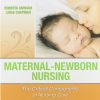
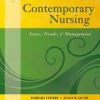
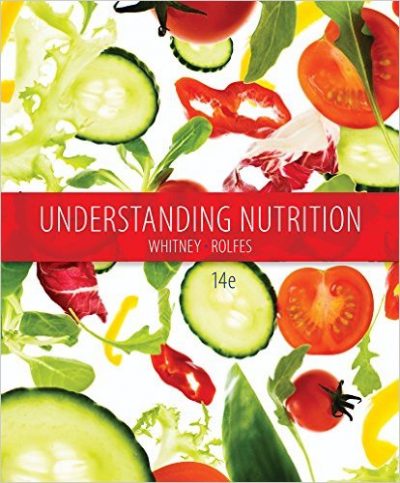
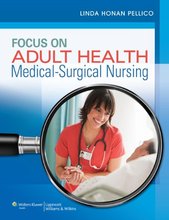
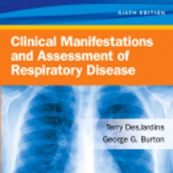
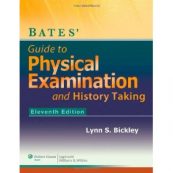
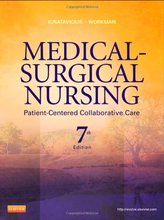
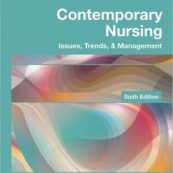
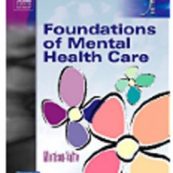
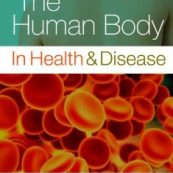
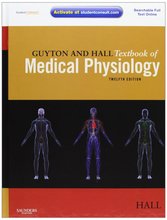
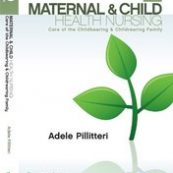
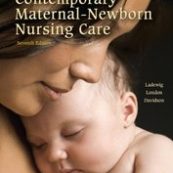
Reviews
There are no reviews yet.